Diario di viaggio di Monica, in vacanza a Dublino con la famiglia.
Monica’s journal on her family holiday in Dublin
In questo periodo di emergenza globale da COVID-19, dovendo restare a casa ed al sicuro per essere socialmente responsabili, non ci resta che partire per un tour virtuale scegliendo un altro modo di viaggiare. Allora ricordiamo i nostri migliori viaggi scrivendo un diario e rivivendo alcuni momenti che hanno suscitato in noi belle sensazioni!
At this time of the global COVID-19, while keeping ourselves socially responsible at home and safe, let’s go on a virtual tour and let’s choose another way of travelling. So let’s remember our best journeys by writing a journal and having a look at some inspiring memories!
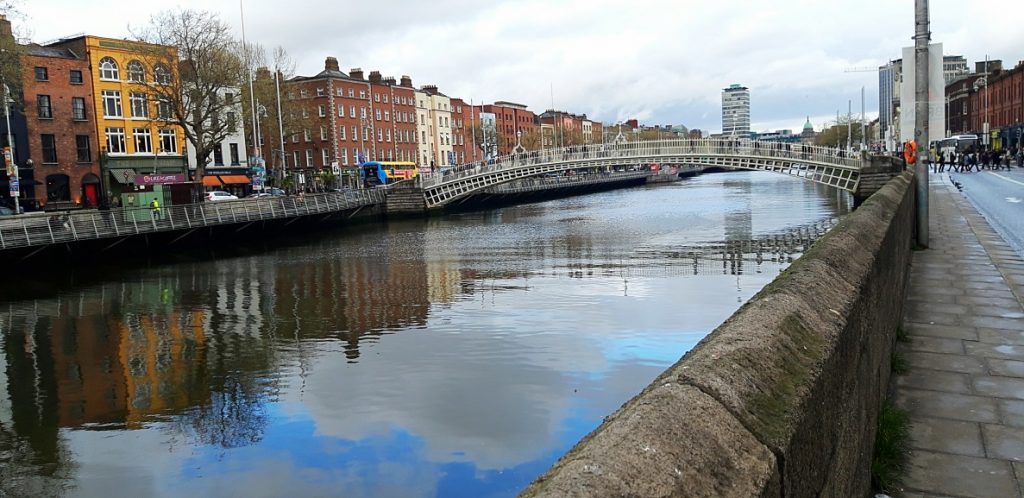
Dublino, vista sul fiume Liffey e ponte Ha’penny – Dublin, view over the river Liffey and Ha’penny Bridge
Dublino merita una visita. Prima di partire la immaginavo una grande città piena di attrazioni turistiche, ma quando sono giunta lì in aprile dell’anno scorso ho avuto la sensazione di un posto accogliente ed affascinante. Ho costruito un itinerario consigliato per un tour di tre giorni in famiglia – dal 25 al 28 aprile 2019 – ed ho potuto visitare la maggior parte dei luoghi principali di questa piccola capitale come il Trinity College, Christ Church Cathedral, St Patrick’s Cathedral, il Temple Bar District e anche alcuni musei.
Dublin is worth visiting. Before leaving I imagined it was a big city full of sightseeing attractions, but when I came there last year in April I felt it was a cosy and charming place. In a three-day family tour – from 25th to 28th April 2019 – I arranged a recommended itinerary and was able to visit most of the main places in this small capital such as the Trinity College, the Christ Church Cathedral, St Patrick’s Cathedral, the Temple Bar District and some museums, too.
Dublino è la capitale irlandese situata sul fiume Liffey che attraversa il centro della città ed è una linea di demarcazione tra il lato nord e il lato sud (in questa zona è possibile esplorare le attrazioni turistiche più famose). Osservando la mappa, ci sono molti ponti – ognuno con la sua storia e il suo stile – che attraversano il Liffey (ad es. il ponte Ha’penny, il ponte O ‘Connell, il ponte Samuel Beckett, ecc.) e tutti offrono una bella vista soprattutto al tramonto.
Dublin is the Irish capital located on the river Liffey that runs right through the centre of the city and is a dividing line between the northside and the southside (in this part you can explore the most famous touristic attractions). If you have a look at the map , there are lots of bridges – each one with its history and style – crossing the Liffey (i.e. the Ha’penny Bridge, the O’ Connell Bridge, the Samuel Beckett Bridge, etc.) and all of them offer a good view especially at sunset.
Dublino è piuttosto compatta, quindi si può girare a piedi per lo più; non perderete l’ orientamento se seguite il percorso lungo il fiume Liffey. In alternativa potete utilizzare molte opzioni convenienti su ruote e treni come il Luas, il DART, l’autobus e le biciclette da noleggiare.
Dublin is quite compact so you can mostly walk; you can’t lose your orientation if you follow the path along by the river Liffey. Alternatively you can use plenty of convenient options on wheels and rail such as the Luas, DART, Dublin bus and Dublin bikes to hire.
Un altro punto di riferimento è il GPO (General Post Office), che è considerato il quartier generale dell’insurrezione di Pasqua del 1916 e il luogo in cui la proclamazione della Repubblica irlandese venne letta per la prima volta ad alta voce. Nei pilastri dell’edificio georgiano ci sono fori di proiettile risalenti all’epoca dell’Insurrezione.
Another landmark is the GPO (General Post Office), that is considered the headquarters of the 1916 Easter Rising and the place where the Proclamation of the Irish Republic was first read aloud. In the pillars of the Georgian building there are bullet holes from the Rising.
Nel mezzo di O ‘Connell Street, non lontano dal GPO, si erge un monumento, la cui forma ricorda uno spillo, di 120 metri chiamato the Spire (la Guglia) o il Monumento della Luce (in irlandese, An Tùr Solais).
A pin-like 120 mt monument called the Spire or the Monument of Light (in Irish, An Tùr Solais) stands in the middle of O’ Connell Street not far from the GPO.
Vi consiglio di passeggiare per le strade acciottolate nell’area di Temple Bar che è piena di pub. Qui potete sperimentare il “craic” (= una parola irlandese per dire”divertirsi”) e la vita notturna di Dublino, ma in generale ci sono molti bei bar e pub ovunque. Alcuni di essi sono famosi come l’iconico The Temple Bar dal 1840; alcuni altri – come The Old Storehouse – sono meno conosciuti ma vi faranno assaporare ugualmente l’atmosfera irlandese. I pub sono sempre molto affollati, specialmente nel tardo pomeriggio e la sera; se qui volete gustarvi un pasto irlandese (potete provare formaggi irlandesi, assaggiare piatti affumicati e freschi di salmone, ostriche di mare e sandwich al burro) ed una pinta di birra artigianale irlandese, è meglio prenotare un tavolo. Tenete presente che i bambini possono rimanere fino alle 21:00, quindi prenotate la cena in anticipo se andate con la vostra famiglia! La gente va nei pub a fare “giri” di Guinness con gli amici ( si dice ” giro” – “round” – quando qualcuno offre per primo un drink a tutti gli altri del gruppo, poi un altro membro offre a sua volta un altro drink e così via), ascolta la musica dal vivo suonata da band irlandesi, canta e balla insieme ai turisti condividendo un’atmosfera amichevole e piacevole.
You can walk on its cobbled streets in the Temple Bar area that is full of pubs. Here you can experience the ‘craic’ (i.e. an Irish word for ‘having a good time’) and the Dublin nightlife, but generally speaking there are lots of nice bars and pubs everywhere. Some of them are well-known like the iconic The Temple Bar since 1840, some others – like The Old Storehouse – are less known but you can enjoy the same Irish-friendly atmosphere. Pubs are always very crowded, especially in the late afternoon and in the evening; if you want to enjoy an Irish meal (you can try Irish cheeses, taste smoked and fresh salmon dishes, some sea oysters and buttered sandwiches) there and enjoy a pint of an Irish craft beer, it’s better to book a table. But remember that children are allowed to stay there until 9 p.m., so book your dinner early if you go with your family! In the pubs people go and have “rounds” of Guinness with friends (a “round” is when someone in a group starts by buying everyone in their group a drink and then the next member buys everyone a drink, and so on), listen to live pub music played by Irish bands, sing and dance together with tourists sharing a friendly and nice atmosphere.
Se poi volete entrare nel vero cuore di Dublino, andate a Grafton Street (menzionata anche nella canzone di Ed Sheeran “Galway girl”), una delle aree dello shopping più famose piene di negozi, caffetterie, ristoranti ed artisti di strada che si esibiscono dal vivo in questa strada parzialmente pedonale.
Then if you want to go into the true heart of Dublin, go to Grafton Street (also mentioned in Ed Sheeran’s song ‘Galway Girl’), one of the most famous shopping areas full of shops, cafés, restaurants and buskers performing live and playing in this street that is partly pedestrian-only.
La statua in bronzo di Molly Malone, un’ immaginaria pescivendola di una delle canzoni più popolari irlandesi (il 13 giugno è considerato il Molly Malone Day), era storicamente situata qui a Grafton Street durante le celebrazioni del Millennio, ma ora è collocata appena fuori dall’ ufficio informazioni turistiche irlandese in Suffolk Street
The bronze statue of Molly Malone, a fictional fishmonger of one of the most popular Irish songs (the 13th June is regarded as Molly Malone Day), was historically located here in Grafton Street during the Millennium celebrations, but it’s now placed just outside the Irish tourist information office on Suffolk Street.
Se volete effettuare un tour culturale legato alle tradizioni del bere, perché non visitare il magazzino della Guinnes? Francamente, non è la migliore esperienza che ho vissuto a Dublino, ma si dice che sia l’attrazione più visitata in Irlanda e in Europa. Questo posto molto conosciuto è situato nel cuore del birrificio St James Gate Brewery, dove milioni di barili di birra Guinness sono stati prodotti dal 1759 (il magazzino è stato costruito nel 1904). È sempre pieno di turisti da tutto il mondo (se volete saltare la fila e risparmiare il 10% sul biglietto, è una buona idea prenotare i biglietti online). Potete effettuare una visita del birrificio spaziando tra i suoi sette piani disposti attorno a un atrio centrale. Ci sono anche alcune attività per i bambini. Quando giungete al “Gravity Bar” all’ultimo piano potrete godervi una vista spettacolare a 360 ° sulla città.
If you want to experience a cultural and drinking tour, why not visiting the Guinnes Storehouse? Frankly speaking, it’s not the best experience I had in Dublin, but it’s said to be the most visited attraction in Ireland and in Europe. It’s a popular place on the site of St James’s Gate Brewery, where million barrels of Guinness beer have been brewed since 1759 (the storehouse was built in 1904). It’s always full of tourists from all over the world (if you want to skip the queue and save 10% on your ticket, it’s a good idea to book your tickets online). Anyway inside you can experience a visit of the brewery and tour across its seven storeys around a central atrium. There are some activities for children, too. When you reach the ‘Gravity Bar’ on the top floor you can enjoy a 360° spectacular view over the city.
La città offre molti bellissimi parchi ed aree verdi. Ogni qualvolta volete prendervi una breve pausa dalle visite turistiche, potete fermarvi e rilassarvi in uno dei suoi parchi più famosi. Questo è il vittoriano St. Stephen’s Green Park: è il più grande polmone verde di Dublino a soli cinque minuti a piedi da Grafton Street. In questo parco del centro città troverete un lago, un parco giochi, fontane, alberi e piante etichettate (alcune in Braille per non vedenti), bellissime aiuole piene di narcisi, ma anche sculture. Se amate i giardini, andate anche a visitare i vicini Iveach Gardens, un roseto vittoriano pieno di cascate, fontane e labirinti.
The city has got lots of beautiful parks and green areas. Whenever you want to take a short break from sightseeing, you can stop and relax in one of its most popular parks. This is the Victorian St. Stephen’s Green Park: it’s Dublin’s greatest green lung just five minutes’ walk from Grafton Street. In this city centre park there is a lake, a playground, there are fountains, trees and labelled plants (some are in Braille for the visually impaired), beautiful flowerbeds full of daffoldils, but also sculptures. If you enjoy gardens you can visit the nearby Iveach Gardens, that is a Victorian rose garden full of cascades, fountains and maze.
Vi è poi la piazza georgiana con giardino Mountjoy Square. Intorno a questa piazza verde partono le lunghe file di case georgiane con le loro porte colorate.
Another Georgian garden square is Mountjoy Square. Around this green square there are terraced Georgian houses with their coloured doors.
Mentre passeggiate non potrete fare a meno di fermarvi e scattare una foto di tutte queste porte!
While walking you cannot but stop and take a picture of all these doors!
Non lontano da questo giardino è possibile visitare Merrion Square Park, famoso per la statua “parlante” dell’Oscar Wilde Memorial realizzata da Danny Osborne. Vicino a questa scultura colorata ci sono due pilastri di pietra coperti dalle citazioni di Wilde con una figura che rappresenta la moglie di Wilde ed un torso maschile che rappresenta Dioniso. Un ottimo modo per vedere i giardini e la Statua di Oscar Wilde è entrare dal lato nord di Merrion Square. All’interno del parco si possono ammirare molte altre sculture, busti ed opere d’arte come quella di Michael Collins (il leader rivoluzionario irlandese), George William Russell e molti altri.
Not far from this garden you can visit Merrion Square Park, that is famous for the ‘talking’ statue of Oscar Wilde Memorial by Danny Osborne. Near this colourful sculpure there are two stone pillars covered with Wilde’s quotations with a figure representing Wilde’s wife and a male torso representing Dionysus. A great way to see the gardens and Oscar Wilde’s Statue is the entrance from Merrion Square North. Inside the park you can admire many other sculptures, busts and works of art such as Michael Collins (the Irish revolutionary leader), George William Russell and many others.
Accanto ad Oscar Wilde anche James Joyce è un’importante presenza letteraria in questa città. Il passato letterario di Dublino è ricco di scrittori ed il primo posto da cui partire per il tour di Joyce è il James Joyce’s Centre, 35 North Great George’s Street. Quindi in Earl Street North troviamo un’altra statua parlante che rappresenta James Joyce. Ci sono inoltre molte targhe dedicate a Joyce sparse sui marciapiedi di Dublino in Clanbrassil Street, Chapelizod, Ormond Quay e nei Merrion Square Gardens.
Not only Oscar Wilde but also James Joyce is an important literary presence in this city. Dublin’s literary past is rich of writers and the first place to start for Joyce’s tour is James Joyce’s Centre, 35 North Great George’s Street. Then in Earl Street North there’s another talking statue: James Joyce. There are also many plaques dedicated to Joyce scattered on the sidewalk throughout Dublin on Clanbrassil Street, in Chapelizod, Ormond Quay and Merrion Square Gardens.
A tal proposito Dublino è una città della letteratura dell’UNESCO: essa è sede del Book of Kells, è la città natale di James Joyce, Oscar Wilde e di quattro premi Nobel per la letteratura come William Butler Yeats, George Bernard Shaw, Samuel Beckett e Seàmus Heaney. Ogni anno, dall’11 al 16 giugno, il celebre Bloomsday, il carnevale letterario di strada, viene celebrato in onore di James Joyce e del suo famoso personaggio Leopold Bloom che troviamo nell’odissea moderna Ulysses; esso si svolge non solo qui ma in tutto il mondo.
By the way, Dublin is a UNESCO City of Literature, it is home to the Book of Kells, it is the birthplace of James Joyce, Oscar Wilde and of four Nobel Prize laureates for Literature like William Butler Yeats, George Bernard Shaw, Samuel Beckett and Seàmus Heaney. Every year from 11th to 16th June the world famous literary street carnival Bloomsday is celebrated here in honour of James Joyce and its famous character Leopold Bloom in the modernist epic Ulysses; it takes places both here and all around the world.
Quando visitate la Old Library (Vecchia Biblioteca) avrete una vista mozzafiato all’interno del Trinity College. Il Trinity College, ufficialmente il Collegio della Santissima e indivisa Trinità della regina Elisabetta, è la più prestigiosa università d’Irlanda dal XVI secolo (fu fondata dalla regina Elisabetta I nel 1592). La storia del college è molto ricca: fino al 1793 era completamente protestante, ma anche fino al 1970 i cattolici che vi si iscrivevano dovevano considerarsi scomunicati. Fino al 1904 solo uomini potevano frequentare questa università. Il campus è tutt’oggi un capolavoro di architettura in stile georgiano.
When visiting the Old Library you can take a breathtaking view inside the Trinity College. Trinity College, officially the College of the Holy and Undivided Trinity of Queen Elizabeth, has been Ireland’s most prestigious university since the 16th century (it was founded by Queen Elizabeth I in 1592). The history of the college is very rich: until 1793 it was completely Protestant, but also until 1970 Catholics who enrolled there had to consider themselves excommunicated. Until 1904 only men could attend this university. The campus is nowadays a masterpiece of architecture in Georgian style.
Abbandonatevi e cogliete fino in fondo lo spirito autentico dello stato d’animo degli studenti che si dirigono attraverso i cancelli verso College Green; passeggiate nelle piazze acciottolate al suo interno ed ammirate le distese di erba verde del campus.
Feel free to capture the authentic spirit of the students’ mood walking through the gates onto College Green; you can wander around in the cobbled squares inside it and admire the green grass areas in the campus.
All’interno del Trinity College non dovete perdervi la Old Library, ossia la Biblioteca Vecchia (* a pagamento). All’interno della famosa enorme Biblioteca Vecchia, conosciuta anche come Long Room, Sala Lunga (60 mt di lunghezza), si possono ammirare busti di marmo di famosi filosofi e scrittori in mezzo a migliaia di libri (oltre 200.000) che sono conservati su due piani in ordine alfabetico, un vero colpo d’occhio. Al suo interno è anche possibile vedere una sezione del Book of Kells, il più famoso manoscritto medievale scritto in latino contenente i quattro vangeli del Nuovo Testamento ed illustrato con decorazioni ricche e colorate.
Inside the Trinity College you can’t miss the Old Library (*fee). Inside the famous huge Old Library, also known as the Long Room (200 ft long), you can admire marble busts of famous philosophers and writers amid thousands of books (over 200,000) which are kept impressively across two floors in alphabetical order. Inside you can also see a section of the Book of Kells, the most famous medieval manuscript written in Latin containing the four gospels of the New Testament and illustrated with rich and colourful decorations.
Storicamente Dublino e l’Irlanda hanno vissuto la dolorosa esperienza dell’emigrazione di massa dal 1700. Perché non andare alla scoperta dell’ EPIC? Nella nuova area a nord del fiume Liffey, attraversate il ponte e vedrete l’EPIC (l’Irish Emigration Museum). Questo museo interattivo autoguidato è un’attrazione imperdibile dove si può conoscere la storia dell’emigrazione irlandese in tutto il mondo attraverso le vicissitudini di oltre 300 irlandesi. Si trova nel CH- Building (Custom House Quay). Davanti al museo si ammirano le Famine Memorial Sculptures. Si tratta di una collezione di statue, fuse in bronzo, che rappresentano e commemorano uomini, donne e bambini che, soffrendo la fame, emigrarono durante la Grande Carestia dell’Irlanda dal 1845 al 1852. Sono state collocate lungo le rive del Liffey verso la nave replica del periodo – la Jeanie Johnston dove ebbe luogo uno dei primi viaggi; sono lì per ricordare ai passanti i tempi difficili che il popolo irlandese ha dovuto attraversare.
Historically Dublin and Ireland have experienced the sorrowful experience of mass emigration since 1700. Why not try the EPIC experience? In the new area north of the river Liffey, cross the bridge and you’ll see the EPIC (the Irish Emigration Museum). This self-guided interactive museum is a must-see attraction where you can learn about Ireland’s emigration history around the world through the stories of more than 300 Irish people. It’s located in the CH-Building (Custom House Quay). In front of the museum you can admire the Famine Memorial Sculpures. This is a collection of statues, cast in bronze, representing and commemorating starving men, women and children who migrated during Ireland’s Great Famine from 1845 to 1852. They have been placed along the the banks of the Liffey towards the replica vessel from the period – the Jeanie Johnston where one of the first voyages took place; they are there to remind the passers-by of the hard times the Irish people had to go through.
Esse sono situate nelle Docklands. Questa è una nuova area vivace che ospita alcune giganti aziende della tecnologia digitale come Google, Amazon, Facebook e Linkedin ed è anche una zona di intrattenimento pieni di locali come cinema, teatri e gallerie.
These are in the Docklands. This is a new bustling area that is home to some digital tech giant companies like Google, Amazon, Facebook and Linkedin, and an entertainment area full of venues like cinemas, theatres and galleries.
Parlando del tempo, tutti e tre i giorni del nostro tour sono stati abbastanza piovosi e umidi (ecco perché l’Irlanda è chiamata l’Isola Smeralda con tutta la sua vegetazione!), quindi la prossima volta programmeremo una visita in estate proprio per goderci un clima più caldo e giornate di sole. Ovviamente in un viaggio di tre giorni non si può vedere tutto. C’è molto altro che posso tenere in considerazione per la mia prossima visita, come il Dublin Writers’ Museum, il National Leprechaun Museum, l’Irish Whiskey Museum, l’IMMA (Irish Museum of Modern Art), il National Museum of Ireland, lo zoo di Dublino, il Phoenix Park e molte altre attrazioni, o una gita il giorno di San Patrizio!
In terms of weather, all the three days of our tour were quite rainy and wet (that’s why Ireland is called the Emerald Island with all its greenery!), so next time we’ll plan a visit in the summer just to enjoy warmer and sunny days. Of course in a three-day trip you can’t see everything. There’s much more that I can save for my next visit, like the Dublin Writers’ Museum, the National Leprechaun Museum, the Irish Whiskey Museum, the IMMA (Irish Museum of Modern Art), the National Museum of Ireland, the Dublin Zoo, the Phoenix Park and many other attractions, or a trip on Saint Patrick’s Day!
Se desiderate un tranquillo weekend culturale o se volete godervi una visita rilassante con gli amici o la vostra famiglia, Dublino non vi deluderà!
If you are looking for a quiet cultural weekend or if you want to enjoy a relaxing visit with your friends or your family, Dublin won’t disappoint you!
Monica Marzarotto
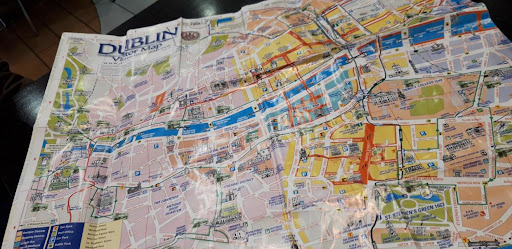
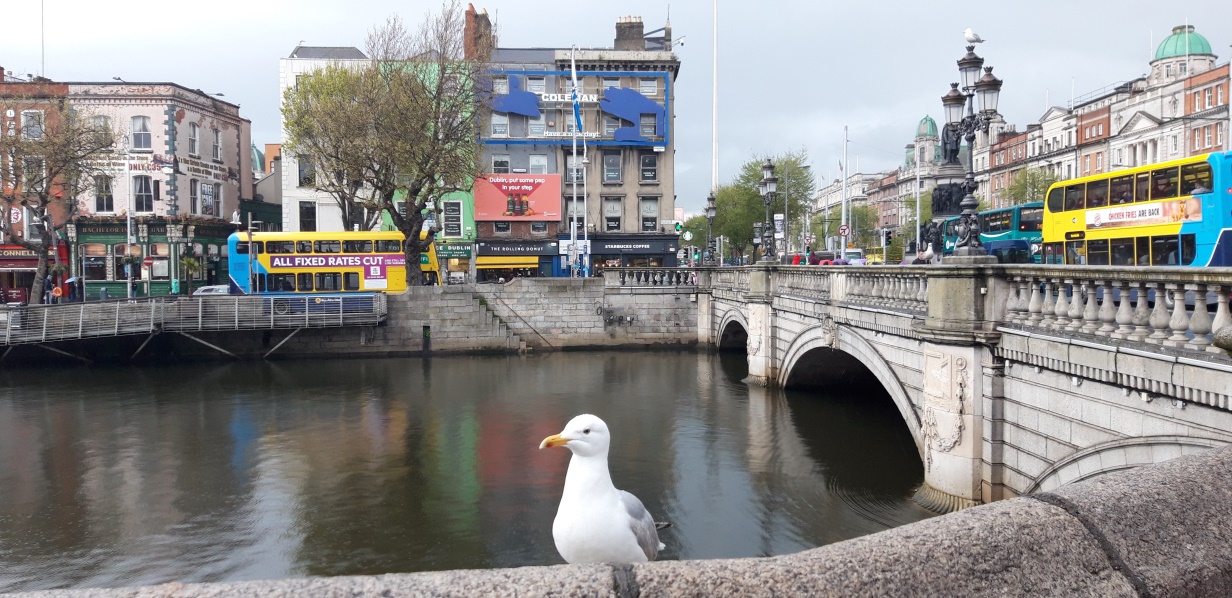
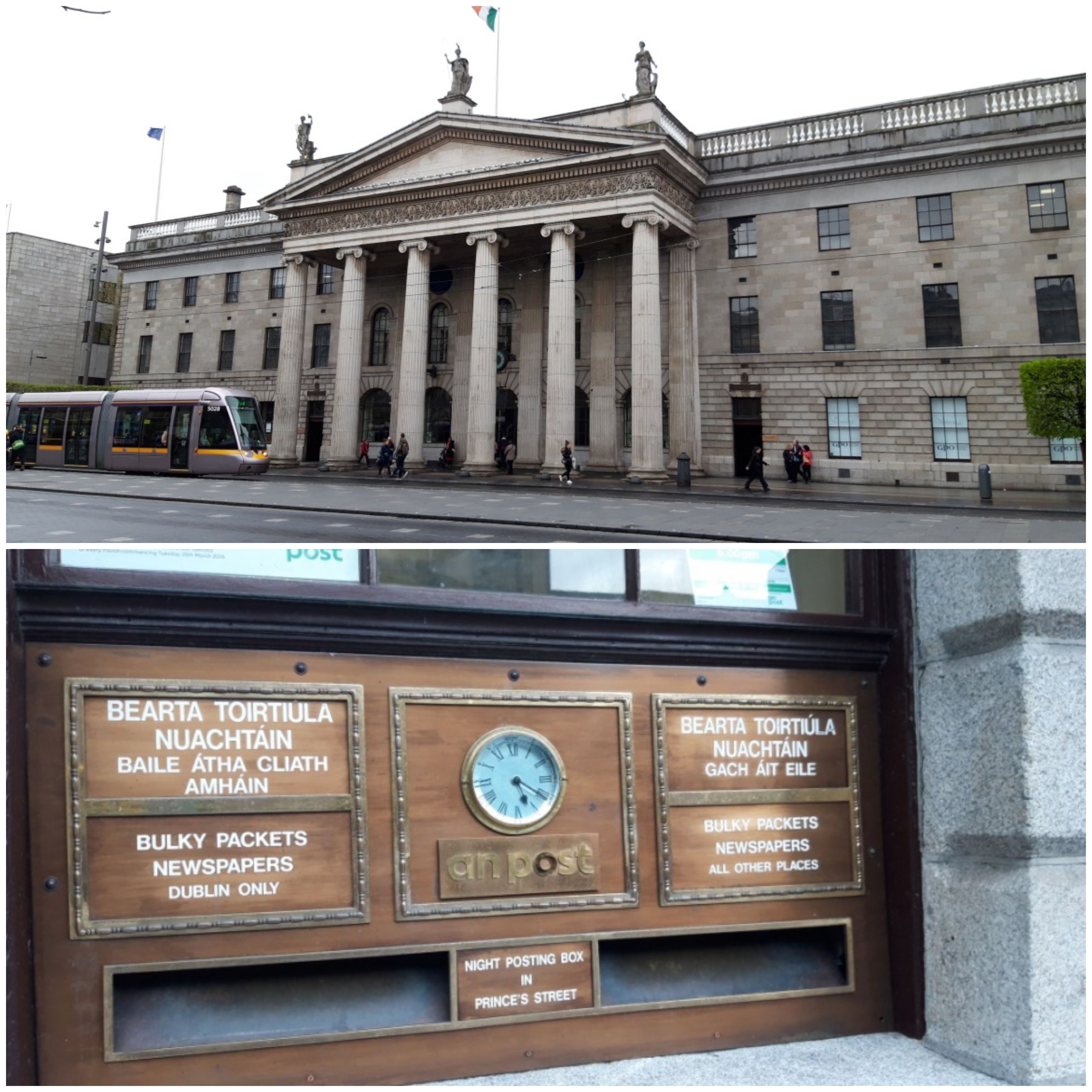


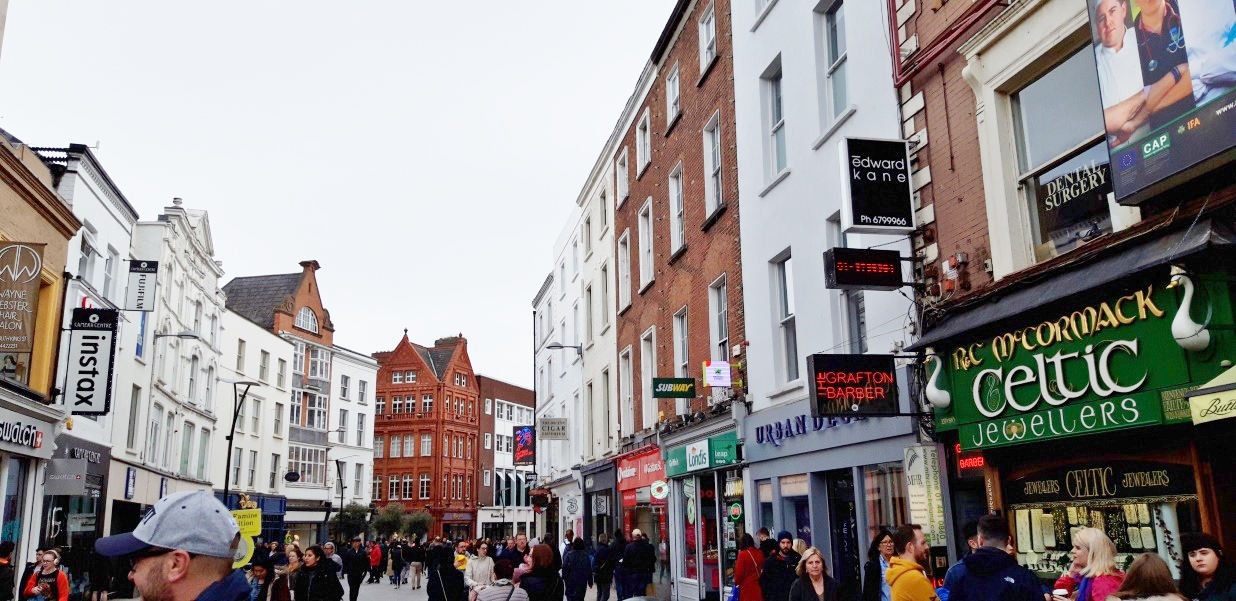
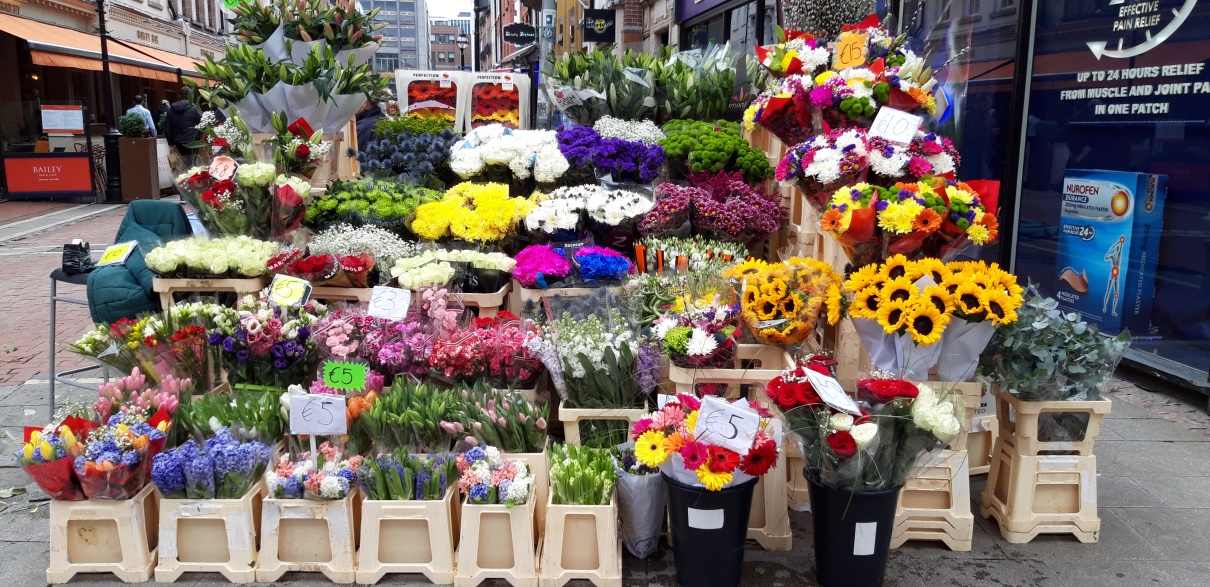
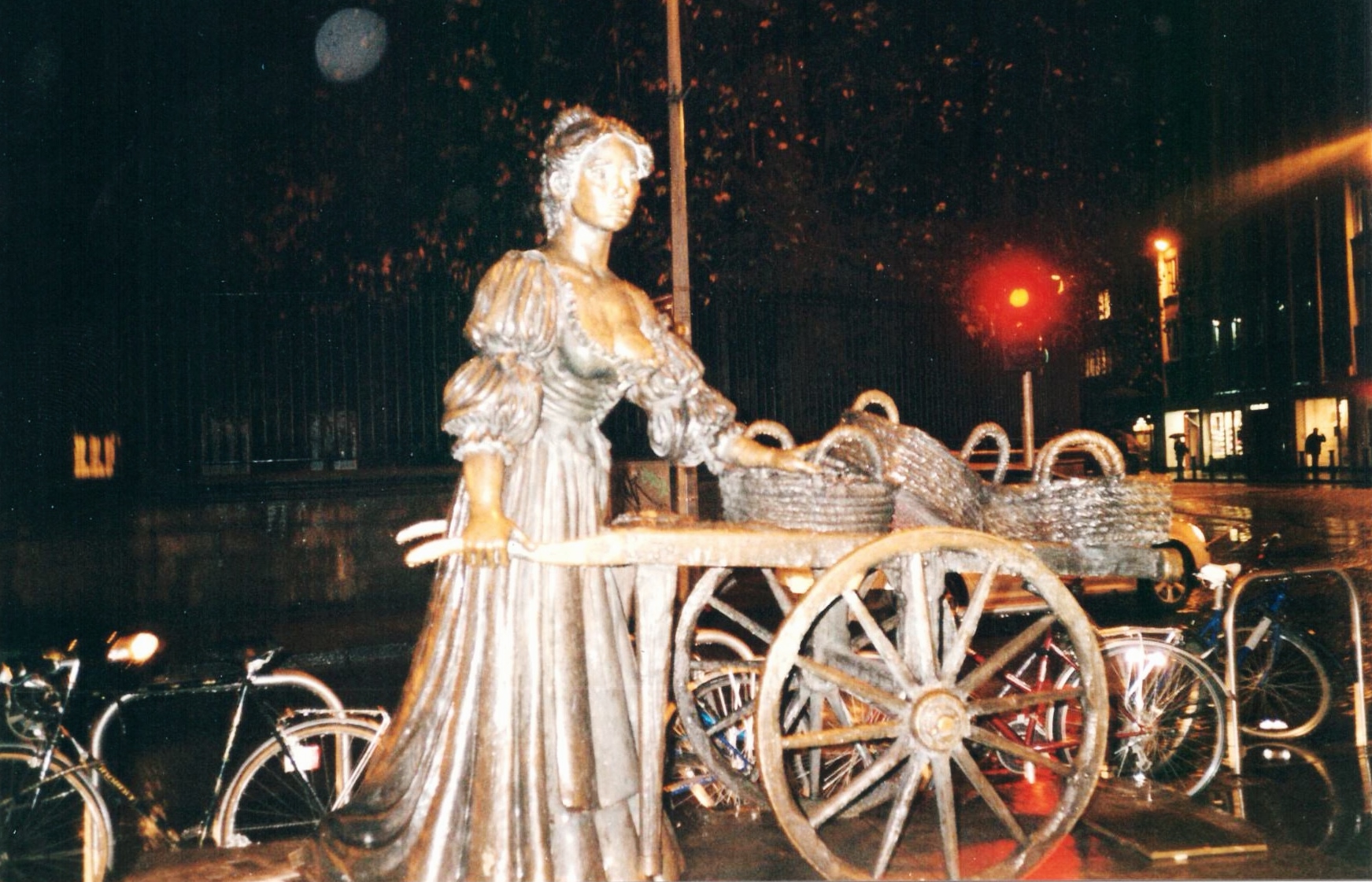
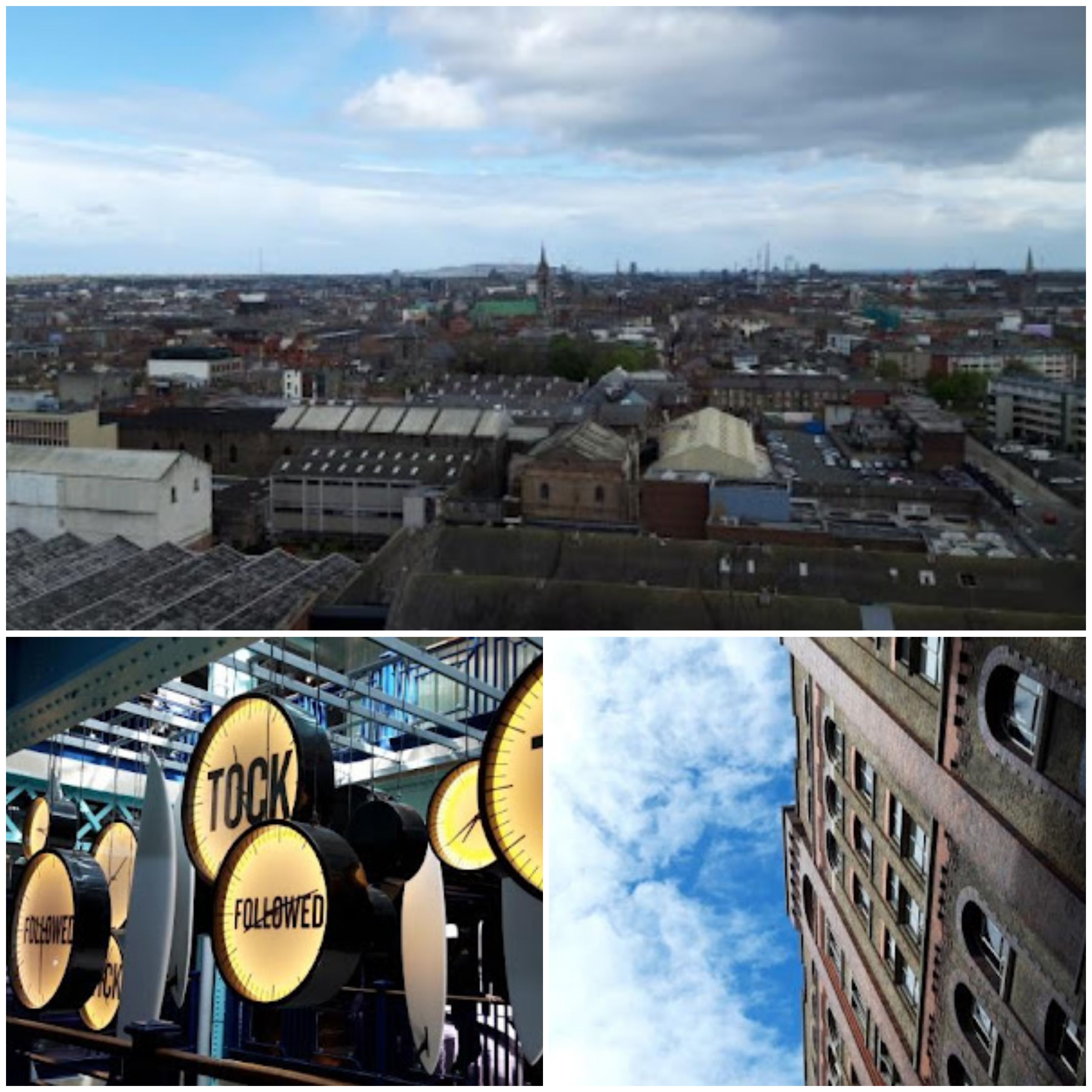

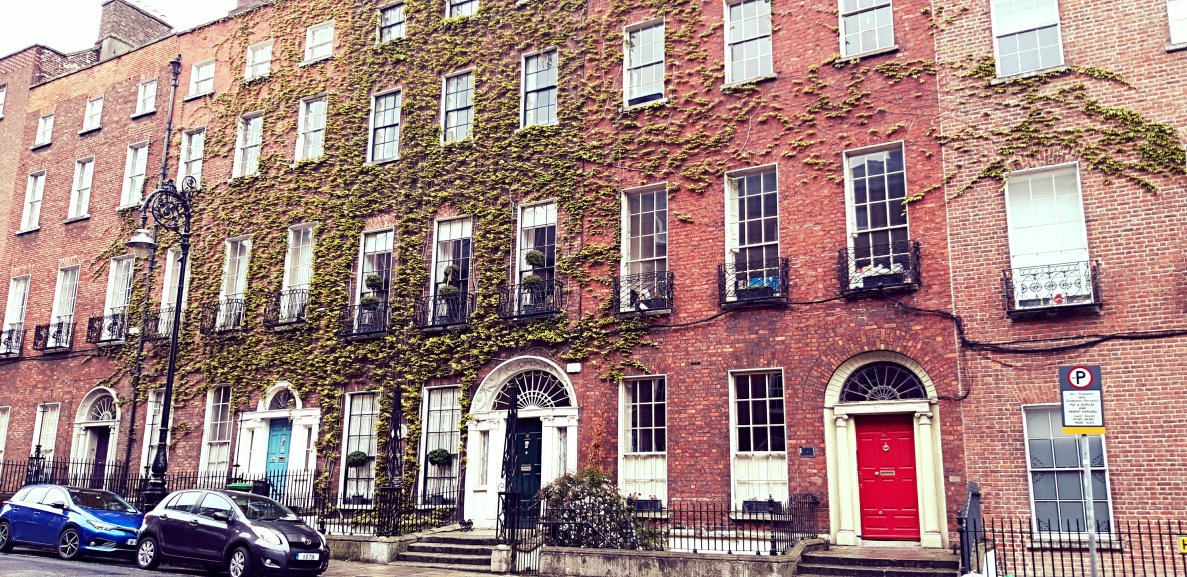

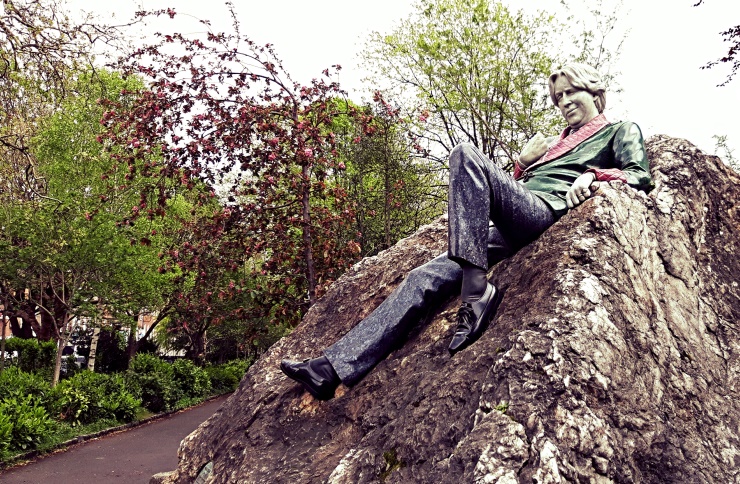
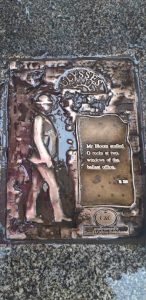
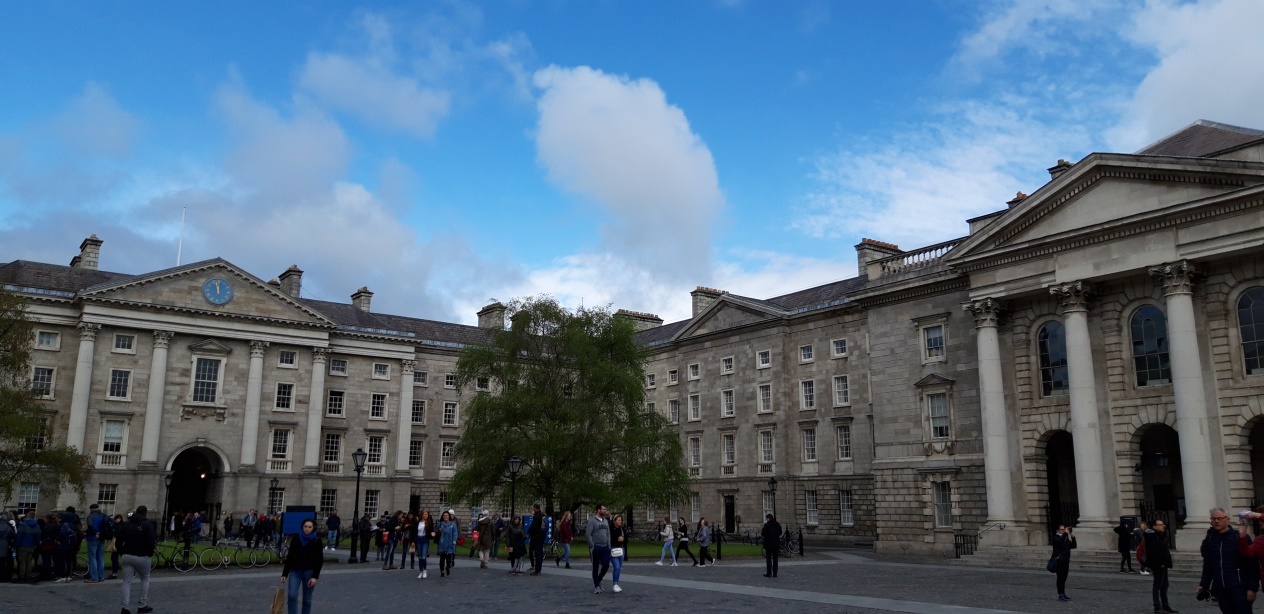
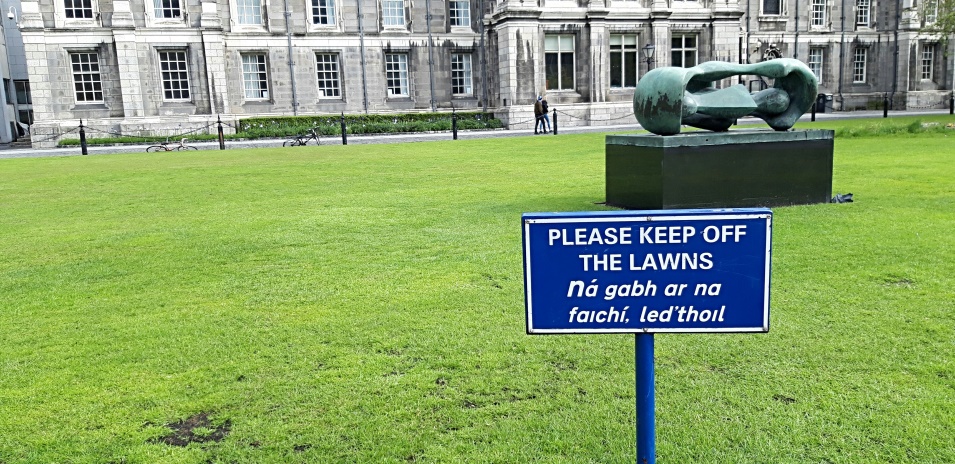
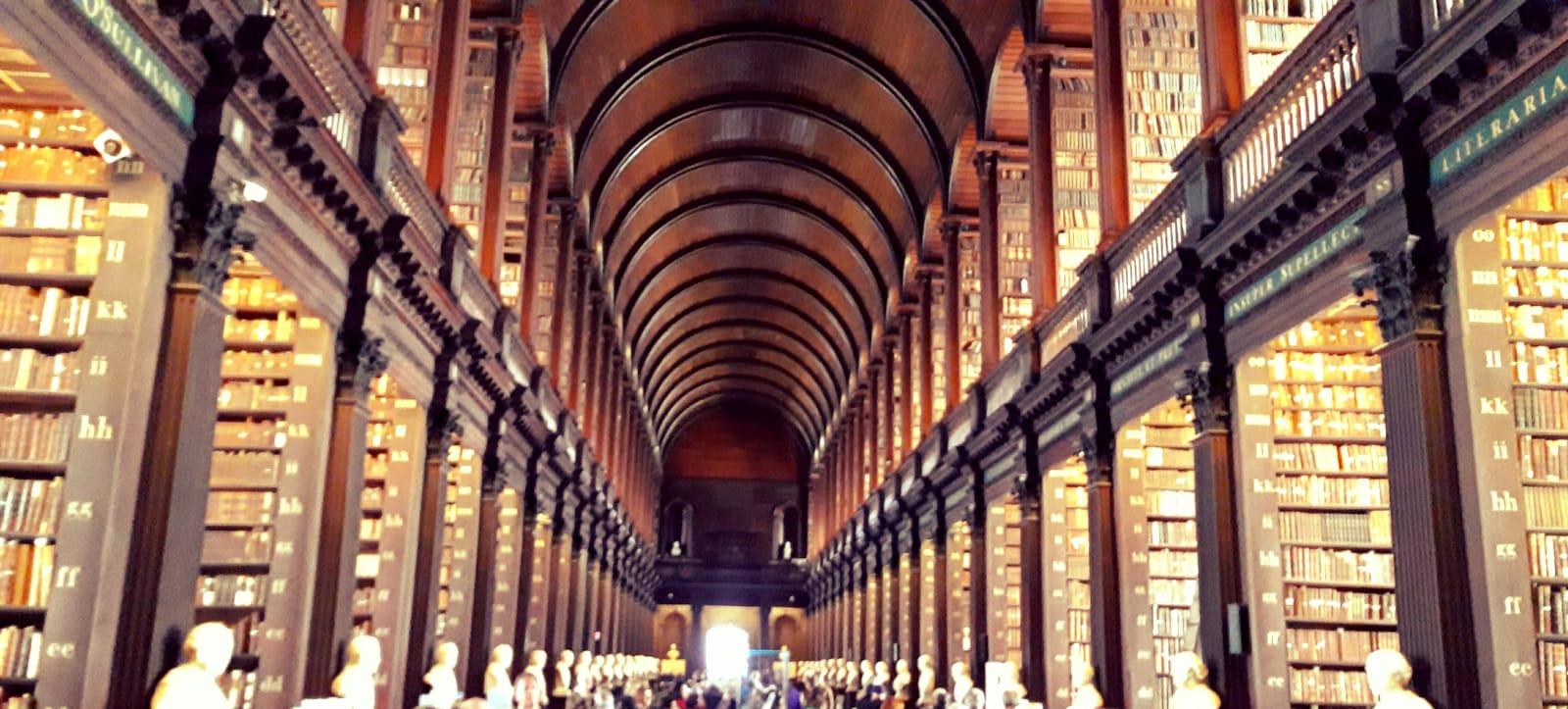
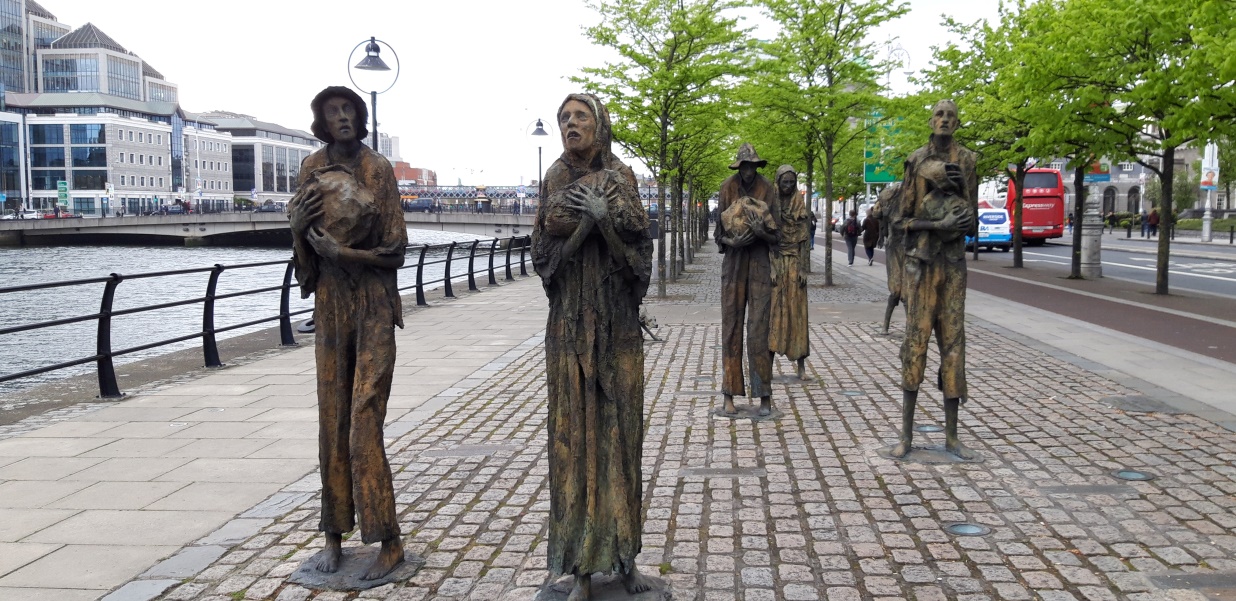

Bellissimo andare a spasso in una città così ricca di storia e così interessante per il presente. Si segue il testo con grande facilità e piacere, meravigliati che in così poco tempo si possa vedere tanto.
Utilissime anche le notazioni su ciò che può piacere e interessare i bambini, non sempre facili da gestire da adulti inevitabilmente mossi da altri interessi e curiosità.
Le foto infine colgono con gusto e attenzione ai particolari aspetti che rivelano un interesse non superficiale per la vita sociale, la natura, l’arte.
Grazie, la mia esperienza di Dublino é stata molto positiva e sono contenta di essere riuscita a trasmettere tutto quello che hai colto!
Questo itinerario era proprio quello che cercavo per vivere Dublino insieme al mio compagno e alla mia bimba. Sono anni che mi riprometto di andarci e vedere dal vivo il Trinity College e (da brava amante di Oscar Wilde) il Merrion Square Park. Chissà se il prossimo sarà finalmente l’anno buono :)
Ti auguro di poter realizzare presto il tuo viaggio! Dublino é una città accogliente a misura di famiglia!
Molto interessante questo tour, grazie per i consigli! Ricordo parecchi dettagli e cose viste in una gita scolastica di terza liceo, in particolar modo la statua ‘parlante’ di Oscar Wilde, il Trinity College e la meravigliosa biblioteca, da restare letteralmente senza fiato. Mi piacerebbe organizzare un tour di tre giorni come il vostro per potermi godere appieno la città, magari sulle orme di qualche canzone degli U2…
Tre giorni sono ottimi per poter visitare tutte le maggiori attrazioni e gustarsi la città! Se si ha più tempo ci sarebbe anche tutto il percorso letterario dei pub letterari, del Dublin Writers Museum oppure il James Joyce Center sulle tracce dei grandi della letteratura irlandese…
Bellissima descrizione di Dublino, mi verrebbe voglia di tornarci! Uno dei ricordi più belli è stata per me “The Old Library” al Trinity College, mai vista una biblioteca così bella. La città, è ricca di attrazioni e si visita molto bene a piedi.
Sì, girarla a piedi é un modo per scoprire la vera Dublino! Ogni angolo é una sorpresa!
Non siamo mai state a Dublino, ma è nei nostri programmi da tempo. Anche per quest’anno dovremo rimandare, ma grazie al tuo articolo, possiamo dire di avere avuto un assaggio di questa città.
Grazie, vi auguro di realizzare un giorno questo viaggio!
Brava Monica, riesci a far venire voglia di andare a visitare questa città anche a una
non fan della zona come me!
Grazie Roberta, vedrai che Dublino non ti deluderà!
Segno tutto per un eventuale weekend! In particolare mi ha colpito il fascino della Old Library. Utilissima la notizia che i bambini dopo le 21 non possono entrare nei pub. Grazie!
Mi fa piacere che sia stato utile! Buon viaggio!
Sono stata a Dublino solo un giorno, alla fine di un viaggio di una settimana passato in giro per l’Irlanda. Eravamo abbastanza stanchi e comunque un giorno solo non basta, per cui non abbiamo “assaporato” tutta la bellezza della città. Poi ci sarei dovuta tornare proprio l’anno scorso in questo periodo, ma ovviamente è saltato tutto, per cui grazie per questa visita virtuale!
Spero che quando sarà possibile avrai modo di trascorrere qualche giorno in questa città per esplorarla come merita e viverne l’atmosfera!
Dublino è molto carina ma ancora più bella è Galway, sulla costa occidentale: una vera chicca
Ho un bellissimo ricordo di Galway con il mare, i gabbiani ed i suoi pub!
Quanto vorrei tornare in questa nazione incredibile. Fu il mio primo viaggio in solitaria e ho impresso nella mente il Parco di Wicklow come nient’altro al mondo. Dublino è una città pazzesca, soprattutto nel periodo natalizio!
Ho anch’io un bel ricordo di Dublino e senza dubbio avrà un bel fascino anche sotto le feste.